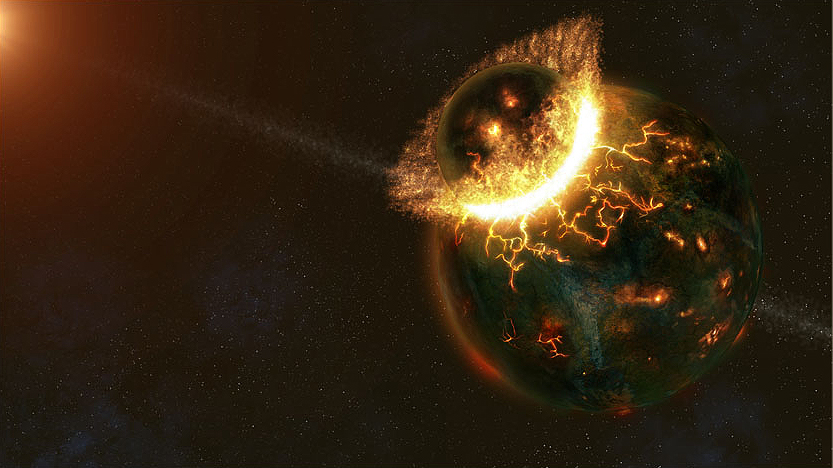To begin, it's been discovered that the Sun has a slew of unobtrusive, heretofore unsuspected neighbors: "Astronomers Find 165 Brown Dwarfs in Solar Neighborhood." How near? All within 160 light-years.
(For those not familiar with the term, a brown dwarf is a not-quite star. It's a gas ball far larger even than Jupiter, and yet not quite massive enough to fuse ordinary hydrogen into helium. Some brown dwarfs, it is believed, are sufficiently massive to trigger fusion using deuterium -- of which there isn't much, so any such fusion soon dies out. Brown dwarfs can be hot, even sans fusion, from the gravitational collapse of so much mass.)
| Boom! |
As one more bit of evidence as to the prevalence of supernova events, consider the traces they've left behind in Earth's biological record: "Ancient bacteria store signs of supernova smattering." Some key snippets from that article:
Thanks to single-celled organisms that sequester iron in sediment, scientists have more evidence that Earth was sprinkled with scraps from exploding stars two million years ago ...
How could distant stars affect life on Earth? No one knows for sure, but studies show around 20 supernovae have exploded within our part of the galaxy in that past 10 million years.
Well. If remote stars meddle with life on Earth, is turnabout fair play? No, I'm not advocating for the Sun to go supernova (and as per above, our home star isn't massive enough for that). The issue is this: "Experts Debate Our Duty and Ability to Spread Life around the Cosmos." If the Breakthrough: Starshot initiative goes anywhere, such directed panspermia isn't a moot point.
 |
| Big moons don't come easily |
That headline overstates the prospective change in thinking, because the decades-old consensus remains intact: that the Moon resulted from a Mars-sized proto-planet (named Theia after one of the Titans of Greek legend) striking the young Earth. The new evidence bears on the likely severity of that fateful blow.
Interesting place, the sky ...

































No comments:
Post a Comment